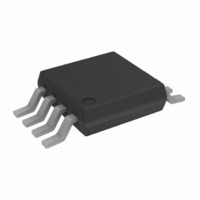ADA4891-2ARMZ Analog Devices Inc, ADA4891-2ARMZ Datasheet - Page 16

ADA4891-2ARMZ
Manufacturer Part Number
ADA4891-2ARMZ
Description
IC OPAMP GP R-R CMOS DUAL 8MSOP
Manufacturer
Analog Devices Inc
Datasheet
1.ADA4891-2ARMZ.pdf
(20 pages)
Specifications of ADA4891-2ARMZ
Slew Rate
210 V/µs
Amplifier Type
General Purpose
Number Of Circuits
2
Output Type
Rail-to-Rail
-3db Bandwidth
240MHz
Current - Input Bias
2pA
Voltage - Input Offset
2500µV
Current - Supply
4.4mA
Current - Output / Channel
150mA
Voltage - Supply, Single/dual (±)
2.7 V ~ 5.5 V, ±1.35 V ~ 2.75 V
Operating Temperature
-40°C ~ 125°C
Mounting Type
Surface Mount
Package / Case
8-MSOP, Micro8™, 8-uMAX, 8-uSOP,
Op Amp Type
High Speed
No. Of Amplifiers
2
Bandwidth
240MHz
Supply Voltage Range
2.7V To 5.5V
Amplifier Case Style
SO
No. Of Pins
8
Operating Temperature Range
-40°C To +125°C
Lead Free Status / RoHS Status
Lead free / RoHS Compliant
Gain Bandwidth Product
-
Lead Free Status / RoHS Status
Lead free / RoHS Compliant, Lead free / RoHS Compliant
Available stocks
Company
Part Number
Manufacturer
Quantity
Price
Part Number:
ADA4891-2ARMZ
Manufacturer:
ADI/亚德诺
Quantity:
20 000
ADA4891-1/ADA4891-2
LAYOUT, GROUNDING, AND BYPASSING
POWER SUPPLY BYPASSING
Power supply pins are additional op amp inputs, and care must be
taken so that a noise-free stable dc voltage is applied. The purpose
of bypass capacitors is to create a low impedance path from the
supply to ground over a range of frequencies, thereby shunting
or filtering the majority of the noise to ground. Bypassing is
also critical for stability, frequency response, distortion, and PSRR
performance.
Chip capacitors of 0.1 μF (X7R or NPO) are critical and should
be as close as possible to the amplifier package. The 0508 case
size for such a capacitor is recommended because it offers low
series inductance and excellent high frequency performance.
Larger chip capacitors, such as 0.1 μF capacitors, can be shared
among a few closely spaced active components in the same
signal path. A 10 μF tantalum capacitor is less critical for high
frequency bypassing, but does provide additional bypassing for
lower frequencies.
GROUNDING
When possible, ground and power planes should be used. Ground
and power planes reduce the resistance and inductance of the
power supply feeds and ground returns. If multiple planes are
used, they should be stitched together with multiple vias. The
returns for the input, output terminations, bypass capacitors,
and R
Ground vias should be placed at the very end of the component
mounting pads to provide a solid ground return. The output load
ground and the bypass capacitor grounds should be returned
to a common point on the ground plane to minimize parasitic
inductance that can help improve distortion performance.
INPUT AND OUTPUT CAPACITANCE
Parasitic capacitance can cause peaking and instability and,
therefore, should be minimized to ensure stable operation.
High speed amplifiers are sensitive to parasitic capacitance between
the inputs and ground. A few picofarads of capacitance reduces
the input impedance at high frequencies, in turn increasing the
gain of the amplifier and causing peaking of the frequency
response or even oscillations, if severe enough. It is recommended
that the external passive components, which are connected to
the input pins, be placed as close as possible to the inputs to
avoid parasitic capacitance.
In addition, all ground and power planes under the pins of
the ADA4891 should be cleared of copper to prevent parasitic
capacitance between the input and output pins to ground. This is
because a single mounting pad on a SOIC footprint can add as
much as 0.2 pF of capacitance to ground if the ground or power
plane is not cleared under the ADA4891 pins. In fact, the ground
and power planes should be kept at a distance of at least 0.05 mm
from the input pins on all layers of the board.
G
should all be kept as close to the ADA4891 as possible.
Rev. A | Page 16 of 20
INPUT-TO-OUTPUT COUPLING
To minimize capacitive coupling between the inputs and output
and to avoid any positive feedback, the input and output signal
traces should not be parallel. In addition, the input traces should
not be close to each other. A minimum of 7 mils between the
two inputs is recommended.
LEAKAGE CURRENTS
In extremely low input bias current amplifier applications, stray
leakage current paths must be kept to a minimum. Any voltage
differential between the amplifier inputs and nearby traces sets
up a leakage path through the PCB. Consider a 1 V signal and
100 GΩ to ground present at the input of the amplifier. The
resultant leakage current is 10 pA; this is 5× the typical input
bias current of the amplifier. Poor PCB layout, contamination,
and the board material can create large leakage currents. Common
contaminants on boards are skin oils, moisture, solder flux, and
cleaning agents. Therefore, it is imperative that the board be
thoroughly cleaned and the board surface be free of contaminants
to take full advantage of the low input bias currents of the ADA4891.
To significantly reduce leakage paths, a guard-ring/shield should be
used around the inputs. The guard-ring circles the input pins
and is driven to the same potential as the input signal, thereby
reducing the potential difference between pins. For the guard
ring to be completely effective, it must be driven by a relatively
low impedance source and should completely surround the
input leads on all sides, above, and below, using a multilayer
board (see Figure 53). The SOT-23-5 package presents a challenge
in keeping the leakage paths to a minimum. The pin spacing is
very tight, so extra care must be used when constructing the guard
ring (see Figure 54 for recommended guard-ring construction).
GUARD RING
V
+IN
–V
OUT
ADA4891
INVERTING
Figure 54. Guard-Ring Layout SOT-23-5
Figure 53. Guard-Ring Configurations
INVERTING
–IN
+V
GUARD RING
V
+IN
–V
OUT
NONINVERTING
NONINVERTING
ADA4891
–IN
+V












